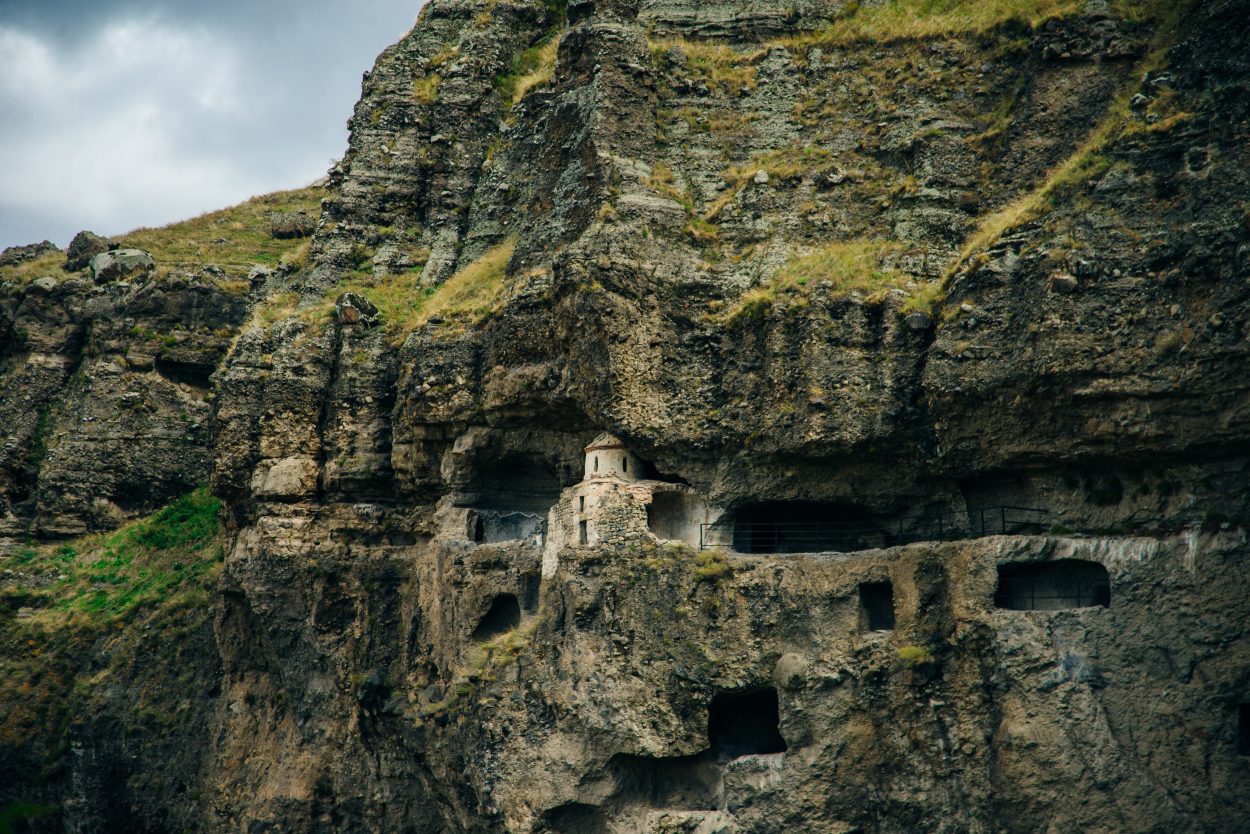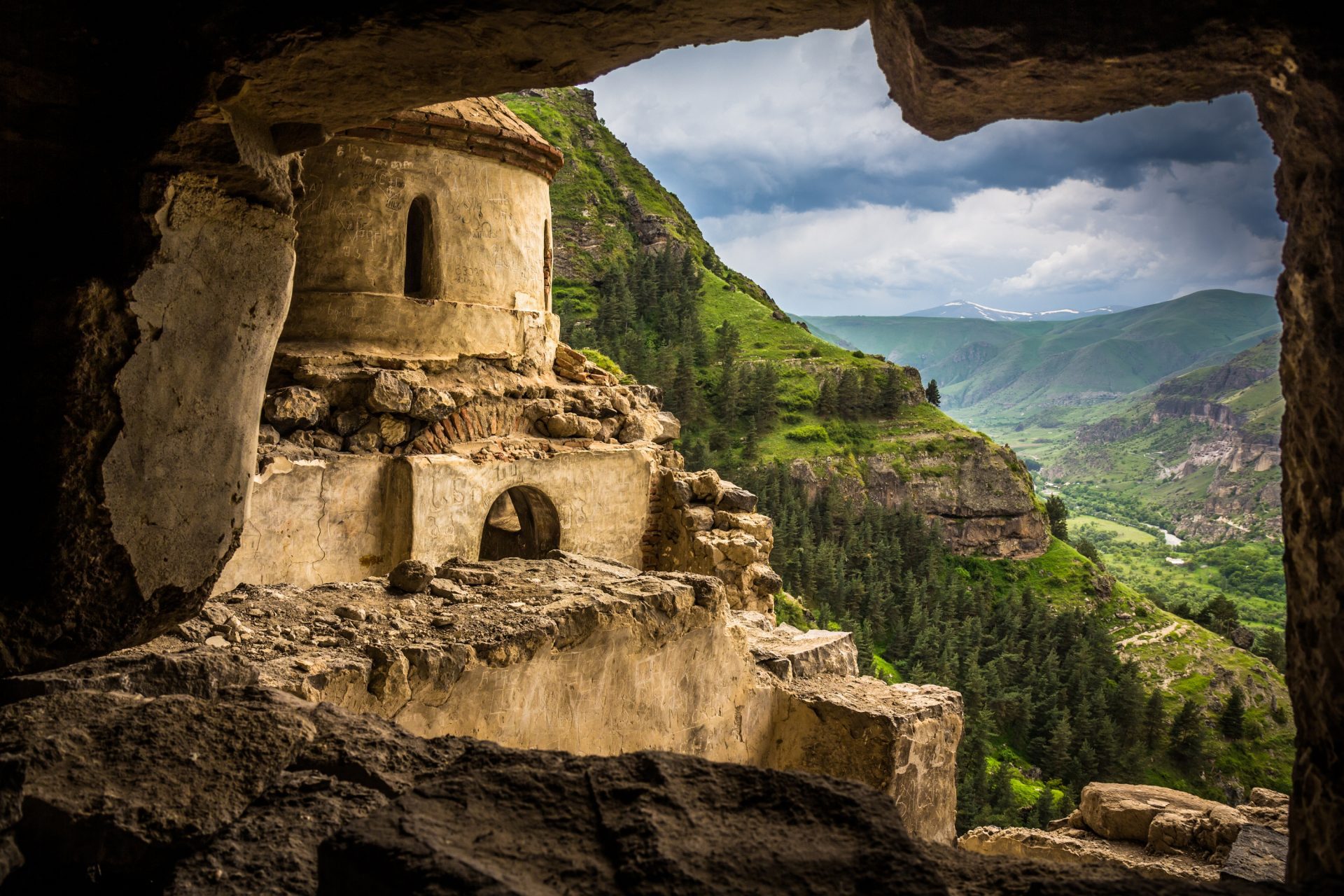Vanis Kvabebi (also called the Vani Caves) is an ancient cave monastery, located in the Vardzia Historical-Architectural Museum-Reserve in the Samtskhe-Javakheti region of the Lesser Caucasus in present-day Georgia.
The monastery is carved into the volcanic steep slopes of the Mtkvari River gorge in a V‐shaped ravine, bounded by subvertical cliffs up to 200 metres in height.
Occupation of the site dates from the 8th century AD, with up to 200 rock-cut caves over 19 levels, that over the centuries has resulted in a maze of honeycomb tunnels, cells, anterooms, storage chambers and churches.
The monastery complex was damaged in 1080 by a major earthquake in the region, but a local patron by the name of Ichkit Gurgenisdze (who is also attributed with the construction of Tsunda church near Tmogvi fortress) conducted a series of restoration works.
In 1204, the Mtsignobartukhutsesi-Chkondideli (the head of notaries) commissioned a limestone barrier to the monastery that forms an enclosed inner courtyard and two places of worship, one chapel near the top of the barrier and a small domed church that clings to the rock in the highest level of tunnels.
Around this time the monastery came under the supervision of the sovereigns of Javakheti – the Tmogveli, who established a set of rules called the ‘Vani Cave Providence’.
By 1283, another earthquake struck the region causing further damage, but it was an assault by the Ottomans in 1576 that resulted in the monastery being completely abandoned.
Header Image Credit : Alex Marakhovets






